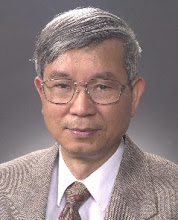By Jim Cheng
Ever since the “Ilha Formosa” legend became known, Taiwanese have started to ask how much more past Taiwan history has been concealed from the public by Chiang Kai-shek, his mafia and Chinese authorities. With a little search, one may not be hard to find that Taiwan is not a mere subset of China history. On the contrary, Taiwan was initially called Formosa following the “Ilha Formosa” legend and the subsequent placing, for the first time in the world history, on the world map under the name Formosa. Both legend and map happened in mid-1500s and in the hand of Portuguese (…..). Dutch declared the island Formosa as the Dutch colony in 1624 following the world history. It is the first time the island became a colony of a foreign country. Subsequently, the island was colonized by Chinese Koxinga who called her Tong-Do first and then Tong-Ling between 1662 and 1683, then by Manchuria Ch’in from 1683 to 1895, that renamed the island Taiwan sometimes after 1683, and finally Japan occupied Taiwan from 1895 to 1945 but it was prevalently known as Formosa in the world. Since 1945, the island becomes a protected territory under the U.S. Military Government (USMG) who temporarily asked the ROC government under Chiang Kai-shek in exile for overseeing Taiwan affairs. It was purely for protecting Taiwan against the Communist China under Mao Tze-don that chased corrupted Chiang out of China.
The earliest recent Formosan History began in 1623 when the Dutch first landed on the island that year, started detailed daily records on social and cultural activities of the inhabitants and the Dutch Government, and officially called her Formosa in 1624. One should go find that past history in “The Formosan Encounter” edited from VOC (1602-1798) including detail accounts on Formosa between 1623 and 1662. One may also find an official government documents on early Taiwan history by Japanese in the Main Library of National Taiwan University. Reading history written only in, and by, Chinese must be extra careful since, as commonly perceived, records by Chinese often give distort historical facts in order to flatter China and Chinese images.
I do not remember how many times I have posted what "Taiwan" should be called appropriately. In the Formosan History, none of those China chauvinistic names, Hoklo, Ho-lo, Hakka, Hak, 台語 and tons of other Chinese garbage are correct. They are merely for purposes to confuse Taiwanese. Then what should we be called? It is obvious from what I have mentioned above. We should be called “Austronesian (AN) Speaking Formosan or in short Formosan.”
I will tell you another glorious past Formosan contributed to the world. When the Dutch first colonized the island in 1623, they immediately noticed that inhabitants spoke only AN languages that were similar to what Indonesian natives in the place VOC Headquarters was located spoke. Subsequently researchers also discovered languages they use, all in AN Languages Family, are in fact originated from Formosa. The Hoklo etc are all foreign languages and brought to the island by southern Chinese Ro-han-ka and Koxinga pirates. Even in early colonial occupation of the island by China, they were spoken by a meager minority. The old Formosa inhabitants should remember there were a lot of aborigines scattered all over rural areas on the island. Articles reported in Jan. 2009’s Science magazine further support the AN Formosa history and AN origin. The AN speaking Formosan or in short, Formosan for the islanders should be the correct call.
Our distinguished linguist, the late Dr. Ong Iok-tek explained that the word Taiwan was even detested by Koxinga gangs since it sounded like “bury all.” Ong not only stated that fact, but also defined the Hoklo differentiated from Minnan in 1961. It has firm support from Linguistics.
To Ms. Tada Kei: Concerning dialects, you may want to read the book “The Power of Barbel” written by John McWhorter, then still an Associate Professor in Linguistics at UC Berkeley. Dialect is an intermediate stage in the linguistic development and evolution. The process follows the same pattern of evolution and speciation in biology, or the Darwinian Evolution.
To Mr. Akiyo: For a better understanding on the true Hakka history, consult “Hakka, the Stranger within China” by Takagi Keizo (1992). Some Hakka like to be related to Hakka in China. Read the book, you will find Taiwan Hakka is embraced by Chinese Hakka. You may study what Marie Lin did on Taiwan’s genetic studies. She is an MD working at the McKay hospital in Taipei and reported many papers on HLA genetic since 2000. She often becomes a news personality on Taiwan. Her HLA data clearly indicate Hoklo and Hakka on Taiwan differ only in spoken languages, but genetically are identical and have the same AN Formosan ancestors. She has many reports in newspapers and written in Chinese.
Jim Cheng. 090807
Subscribe to:
Post Comments (Atom)

No comments:
Post a Comment